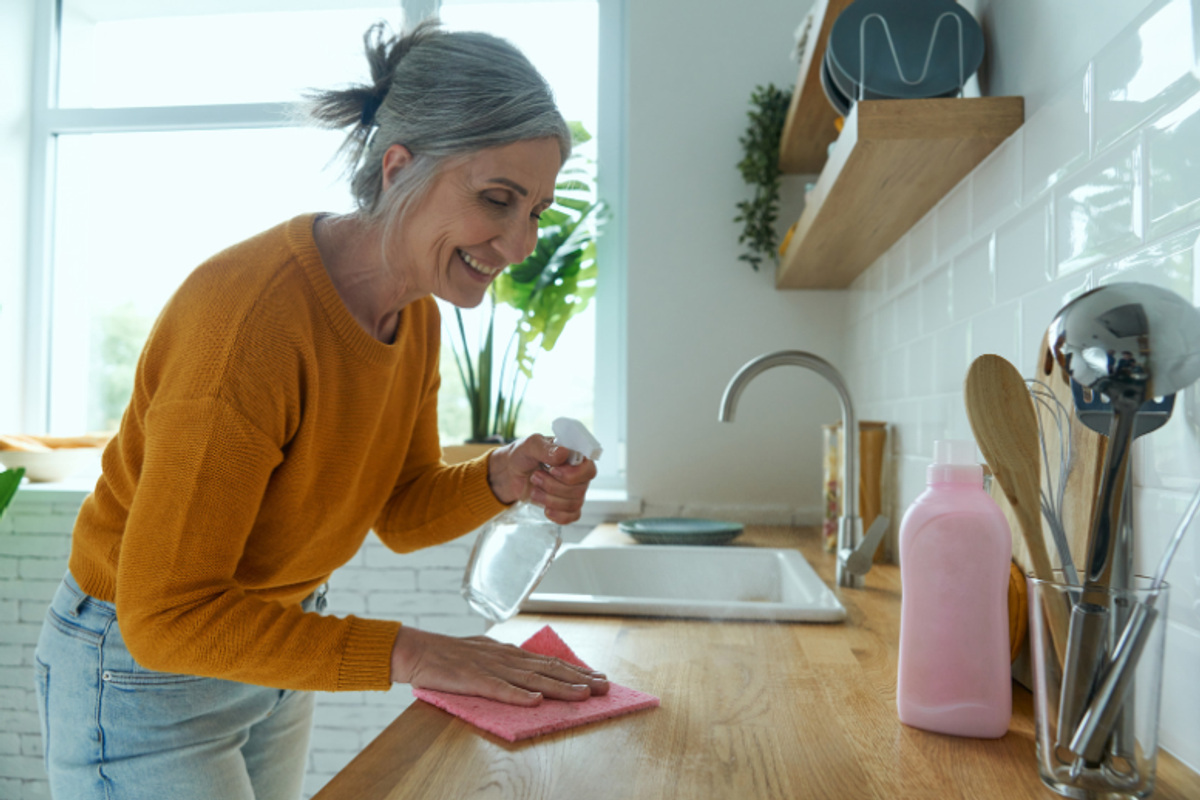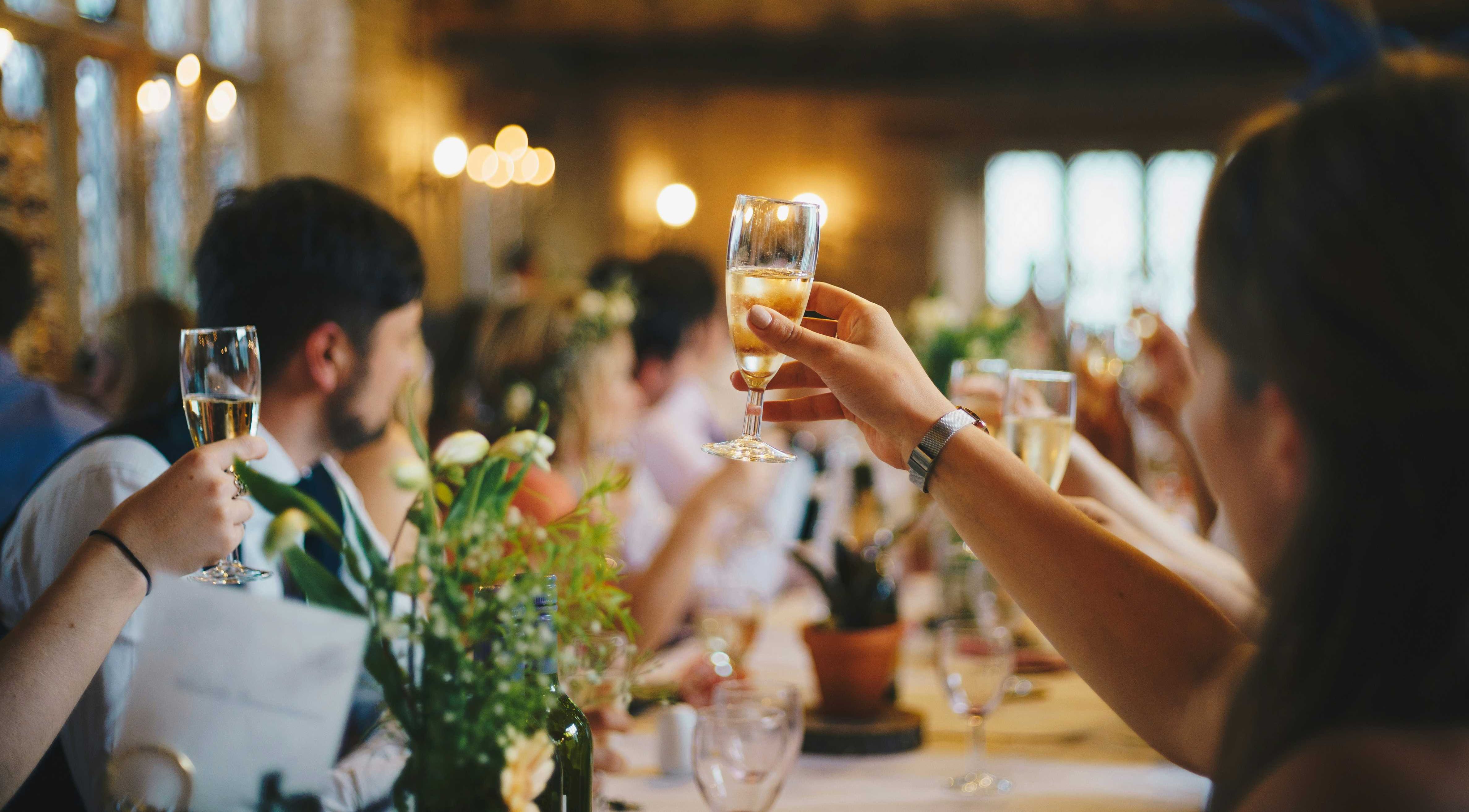Michelle Obama breaks down why voting Biden in—and Trump out—will end America's chaos

For eight years, Michelle Obama had a front row seat to the U.S. presidency. Perhaps more than any other citizen, she's seen what that job entails and what the character of the person holding that office means for their ability to do the job.
As the world's most admired woman several years running, Obama has an audience. And though she's famously detached from the nitty gritty world of politics, she has the first-hand experience to offer some words of wisdom. Today, she's done just that.
In a 26-minute video posted to social media, Obama makes a "closing argument" for ending the Trump presidency and opening a new chapter of decency and calm with Joe Biden. In it, she lays out where we are in this crazy, chaotic moment and explains how the president has contributed to getting us here. "Let's be honest," she says. "The country is in chaos because of a president who isn't up to the job."
She also lays out reasons for voting for Biden, whom she calls "a leader who has the character and the experience to put an end to this chaos, start solving these problems and help lighten the load for families all across the country."
It's clear that the former First Lady filmed the video prior to the president contracting COVID-19, as she doesn't mention the diagnosis (or the irresponsible insanity that has followed) in it. She also shared this message on Facebook with the video:
"I understand if the last few days have felt like a whirlwind. My heart goes out to everyone touched by this virus—from those in the White House, especially the Secret Service and residence staff whose service to this country ought never be taken for granted, to all those across the country whose names and stories most of us will unfortunately never know.
The truth is, the events of the past few days are a bracing reminder of the tragedy that has been this administration's response to this crisis. And I'll be very honest: This is a message I'd planned to release earlier, and after everything that's happened, I weighed whether or not to go public at all. But I wanted you all to hear what's been on my mind. Because the drama of the past few days has only emphasized what's at stake in this election, from the coronavirus to a constant drumbeat of fear, division, and chaos that's threatening to spiral out of control. There's only one way we can pull ourselves out—by voting for my friend Joe Biden, who's got the heart, the experience, and the character to lead us to better days.
So I hope you'll watch, and I hope you'll share this video with everyone you know who might still be deciding how or if they're going to vote. And more than anything, I hope you'll vote for Joe with power, with passion, and with a love of this country that cannot possibly be denied."
Michelle Obama's Closing Argument | Joe Biden For President 2020youtu.be
There's a lot of compelling stuff in there, but here are some highlights worth revisiting.
On Trump's values:
"A president's policies are a direct reflection of their values and we're seeing that truth on display with our current president who has devoted his life to enriching himself, his family and other wealthy people he truly understands, cutting taxes for the rich and big corporations, cutting regulations that protect regular families from getting taken advantage of by people like him, cutting his friends loose from prison time. He boasts about gains in the stock market, but when you look at the lives of regular folks, whether it's creating blue-collar jobs, making healthcare more affordable, protecting the environment, keeping our family safe from gun violence, let alone the coronavirus, there's nothing much to brag about."
On Biden's values:
"By contrast, Joe Biden has lived his life guided by values and principles that mirror ones that most Americans can recognize. I know Joe. He is a good man who understands the struggles of everyday folks. When he was a kid, his dad lost his job. His family had to move to find work. As a young man, he quit his job at a lucrative law firm to serve as a public defender protecting the rights of those who couldn't defend themselves.
He continued to serve this country, even in the face of unimaginable tragedy, losing his wife and baby daughter, later in his life, his eldest son. Relying on his deep faith in God to carry him through, never growing cynical and always willing to see the humanity in us all. It is that spirit, that determination that will make Joe the kind of president we need right now, one who will continue to put the needs of the country before his own to ensure that all families can get back on their feet and our economy can get back on track."
On how Biden will help the nation recover from the pandemic:
"He'll start by getting this virus under control, working with a broad coalition of leaders to develop a national strategy that will include mandatory mask wearing and free testing. He'll get schools the resources they need to sort through this confusion. He will listen to doctors and scientists to make sure that any vaccine will be safe, effective and available to everyone.
Joe Biden will also get back to work solving problems that this president has ignored or made worse these past four years. Joe will give working families a tax credit for childcare. He'll roll back those tax cuts for the rich and instead help small businesses and working families. He'll lower the cost of prescription drugs and give every American access to affordable health coverage. He'll work to restore trust between police and communities of color and address the racial discrimination that has plagued us for far too long. He will protect our planet. He will invest in our schools and bring people together to get something done, even across our differences."
On thinking beyond partisanship with your vote:
"I want to ask every single American, no matter what party you normally vote for, to please take a moment to pause. Click off the news. Think about how you felt over these last four years, how quickly things have turned and then think about what next four years could mean for our country's future, the message we will send to our children about who we are and what we truly value. Think about what would possibly compel you to accept this level of chaos, violence, and confusion under this president and be willing to watch our country continue to spiral out of control. Because we can no longer pretend that we don't know exactly who and what this president stands for."
On bringing competence and maturity back to the White House and ending the chaos:
"Right now, we've got a chance to start getting things back under control, to restore some stability and integrity and soul in this country. It is within our grasp. That's what keeps me going, thinking about a time not all that far off, with a new president in the Oval Office, a trustworthy, honest, stable leader with a clear plan for controlling this virus and getting our economy back on track. With meaningful support for families and schools, with competence and maturity instead of chaos and confusion. It is possible. It really is, but only if we vote for Joe Biden in this election. We have all been working so hard to keep ourselves and our families afloat and we deserve a president who will do the same."
Please vote, and vote early if possible. Visit vote.org to register to vote and find out about voting deadlines in your state.
- Michelle Obama's instantly classic speech at the 'Black Girls Rock ... ›
- Michelle Obama named 'most admired woman in the world'—again ... ›
- Michelle Obama brought down the house. Here are 5 incredible ... ›
- Biden delivered a unifying message to America at Gettysburg—without mentioning Trump once - Upworthy ›
- Lifelong Republicans are turning out to vote for Biden, unable to stomach another Trump term - Upworthy ›
- The New England Journal of Medicine asking Americans to vote in new leadership is unprecedented - Upworthy ›
- Clip of Biden comforting the son of a Parkland school shooting victim has Americans in tears - Upworthy ›
- President Obama has a message for President Trump. He won't listen, but we should. - Upworthy ›



 TikTok · Ale
TikTok · Ale
 Autumn created this piece when she was just 5 years old.Autumn de Forest
Autumn created this piece when she was just 5 years old.Autumn de Forest  Autumn de Forest paints Autumn de Forest
Autumn de Forest paints Autumn de Forest  An Autumn de Forest paintingAutumn de Forest
An Autumn de Forest paintingAutumn de Forest 
 Autumn de Forest stands with the Pope who looks at one of her paintings Autumn de Forest
Autumn de Forest stands with the Pope who looks at one of her paintings Autumn de Forest 
 A joyful family playing outdoors.
A joyful family playing outdoors. Child counting coins with an abacus and jar nearby on a table.
Child counting coins with an abacus and jar nearby on a table.


 stefflon don dance GIF by LuisFonsi
stefflon don dance GIF by LuisFonsi  People at a party give a toast. Photo by
People at a party give a toast. Photo by  Vince Vaughn enjoys the party.
Vince Vaughn enjoys the party.